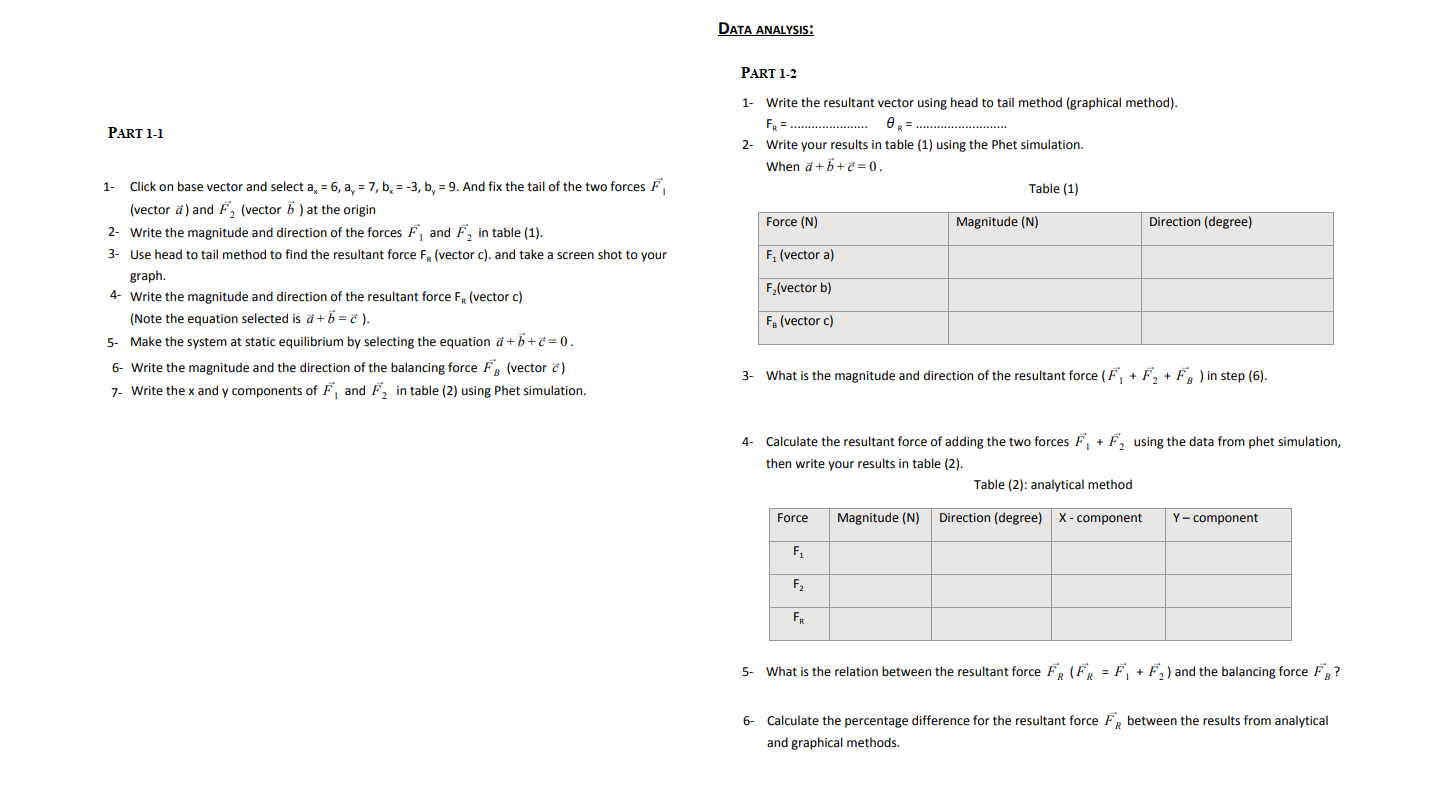Home /
Expert Answers /
Physics /
nbsp-part-1-2-1-write-the-resultant-vector-using-head-to-tail-method-graphical-method-part-1-pa289
(Solved): PART 1-2 1- Write the resultant vector using head to tail method (graphical method). PART 1 ...
PART 1-2 1- Write the resultant vector using head to tail method (graphical method). PART 1-1 2- Write your results in table (1) using the Phet simulation. 1- Click on base vector and select \( a_{x}=6, a_{y}=7, b_{x}=-3, b_{y}=9 \). And fix the tail of the two forces \( \vec{F}_{1} \) When \( \vec{a}+\vec{b}+\vec{c}=0 \). Table (1) (vector \( \vec{a} \) ) and \( \vec{F}_{2} \) (vector \( \vec{b} \) ) at the origin 2- Write the magnitude and direction of the forces \( \vec{F}_{1} \) and \( \vec{F}_{2} \) in table (1). 3- Use head to tail method to find the resultant force \( F_{R} \) (vector \( c \) ). and take a screen shot to your graph. 4- Write the magnitude and direction of the resultant force \( F_{R} \) (vector \( \left.c\right) \) (Note the equation selected is \( \vec{a}+\vec{b}=\vec{c} \) ). 5- Make the system at static equilibrium by selecting the equation \( \vec{a}+\vec{b}+\vec{c}=0 \). 6- Write the magnitude and the direction of the balancing force \( \overrightarrow{F_{B}} \) (vector \( \vec{c} \) ) 3- What is the magnitude and direction of the resultant force \( \left(\vec{F}_{1}+\vec{F}_{2}+\vec{F}_{B}\right) \) in step (6). 7- Write the \( x \) and \( y \) components of \( \vec{F}_{1} \) and \( \vec{F}_{2} \) in table (2) using Phet simulation. 4- Calculate the resultant force of adding the two forces \( \vec{F}_{1}+\vec{F}_{2} \) using the data from phet simulation, then write your results in table (2). Table (2): analytical method 5- What is the relation between the resultant force \( \vec{F}_{R}\left(\vec{F}_{R}=\vec{F}_{1}+\vec{F}_{2}\right) \) and the balancing force \( \vec{F}_{B} \) ? 6- Calculate the percentage difference for the resultant force \( \vec{F}_{R} \) between the results from analytical and graphical methods.
